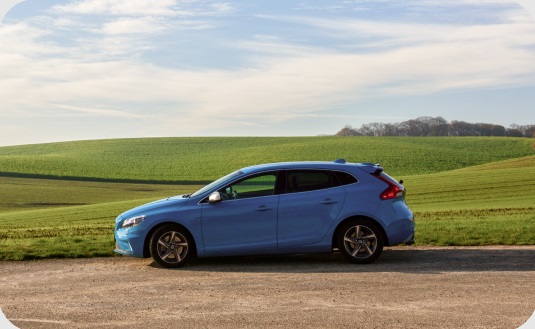What is a hybrid car and how does it work?
Today, it’s not uncommon to see more than a few eco-friendly cars on Australian roads. Hybrids have come a long way since the first mass-produced model was introduced in 1997. As of writing, hybrid vehicles make up 14% of new vehicle sales in Australia. However, not everyone is entirely clear on what they are and the benefits they can provide.
In this article, we talk about hybrid vehicles, from what they are and how they work to how to finance your purchase.
What is a hybrid vehicle?
A hybrid car is a type of vehicle that uses a combination of both an electric motor and an internal combustion engine. As the name suggests, it’s a hybrid of an electric car and a fuel-powered vehicle. There are different kinds of hybrid cars, but the main two types are:
-
Hybrid electric vehicles (HEVs): These hybrid cars run on fuel and battery power. They have an internal combustion engine and an electric motor. These don’t need to be plugged in to recharge. Instead, it uses a regenerative braking system to charge its battery. You still need to go to petrol stations, but these cars have better fuel efficiency as each tank will last longer.
-
Plug-in hybrid vehicles (PHEVs): The plug-in hybrid vehicle can be recharged using a charging station or outlet. This type of hybrid car uses its electric battery as its main power source and only uses the internal combustion engine when the battery power is low, the opposite of HEVs.
A hybrid car is a great option for those who aren’t quite ready to go fully electric. These hybrid vehicles can help you save on fuel costs while also offering environmental benefits.
How do hybrid cars work?
Hybrid vehicles have an electric motor and internal combustion engine that work together and switch automatically depending on the road conditions.
These vehicles have sensors built in to automatically detect when certain driving conditions like speed or terrain are met and will prioritise the electric or gas motor accordingly. With hybrid electric vehicles, the motor is generally used when the car is starting or at a stop which results in less fuel consumption from a starting position.
Plug-in hybrids work similarly but they prioritise the electric motor when driving. The petrol engine is used when the battery level is low.
How long do hybrid car batteries last?
Hybrid car batteries can usually last up to eight years of 160,000km. This is the reason why most car manufacturers have an eight-year warranty on their batteries. Over time, the hybrid car battery will degrade meaning the amount of power it can hold will decline. The rate of battery degradation differs depending on the hybrid vehicle’s make, model, manufacturer, and use.
Advantages of buying a hybrid car
Here are some benefits of owning a hybrid car:
Eco-friendly
One of the most important benefits of hybrid vehicles, whether they are hybrid electric or plug-in hybrid, is the lessened environmental impact. These vehicles produce less carbon and nitrogen oxide emissions. You can reduce your carbon footprint while still enjoying the perks of a vehicle with both an electric battery and an internal combustion engine.
Less expensive than electric cars
Hybrid cars are much more accessible in terms of price compared to fully electric vehicles. The lower price tag helps a lot of buyers turn to more energy-efficient and environmentally friendly vehicle alternatives. There are also plenty of incentives for electric car purchases like green car rebates and discounts.
No more range anxiety
Aside from the price, a lot of buyers are anxious about buying electric vehicles because they’re afraid of getting less range. Also, the lack of public charging stations in some areas makes it difficult to own an electric vehicle. With a hybrid electric car, you don’t have to worry about sacrificing range or running out of battery since you can still fuel up at your local petrol station.
Lower luxury car tax
Fuel-efficient cars worth $89,332 and over with a maximum fuel consumption of 3.5 litres per 100 km have a higher luxury car tax threshold. This means you won’t pay as much luxury car tax for your hybrid car than a standard car.
Cheaper registration and stamp duty
You could get a discount on your car registration and stamp duty. Some states and territories offer lower registration and stamp duty costs to eligible hybrid and fully electric vehicles. With car expenses potentially adding up to thousands of dollars in any given year, it’s nice to be able to get a few discounts here and there.
Car loans for hybrid cars
Buying a hybrid vehicle can be more expensive than a standard petrol-only car. But the good news is there are low rate car finance options available specifically for eligible hybrid vehicles like the ones from loans.com.au.
At loans.com.au, we offer specially discounted rates for those buying hybrid vehicles. You can get a discount on our standard car loan rate so you can save hundreds (if not thousands) over the term of your loan. You can save money while doing your part to save the environment.
Check out our green car loan today or speak with our friendly lending specialists by calling 13 10 90 to learn more. You can also apply online to start the green car finance process sooner.
Find out in under 2 minutes if you qualify for one of our low rate car loans.

Other helpful resources:
About the article
As Australia's leading online lender, loans.com.au has been helping people into their dream homes and cars for more than 10 years. Our content is written and reviewed by experienced financial experts. The information we provide is general in nature and does not take into account your personal objectives or needs. If you'd like to chat to one of our lending specialists about a home or car loan, contact us on Live Chat or by calling 13 10 90.





















